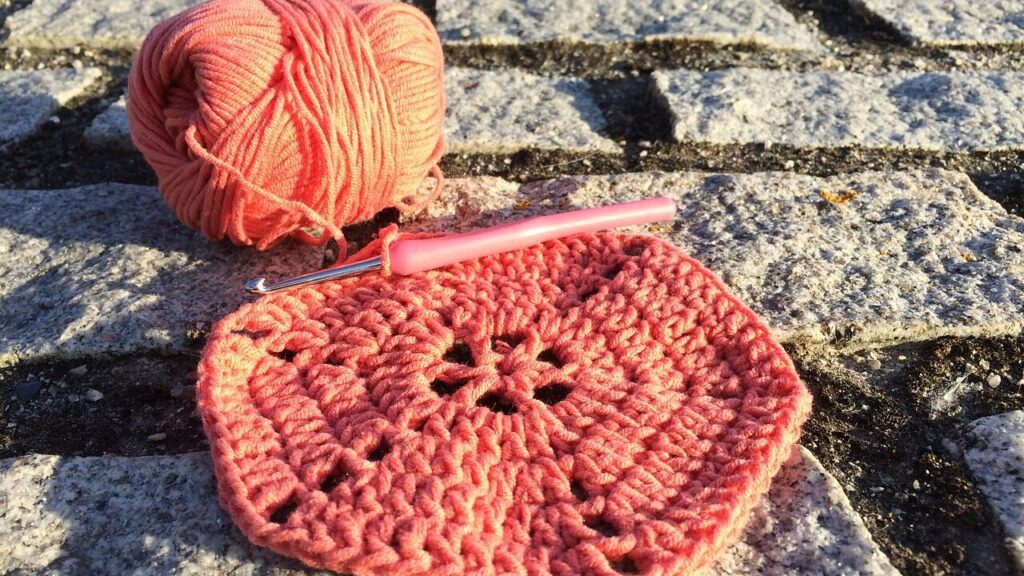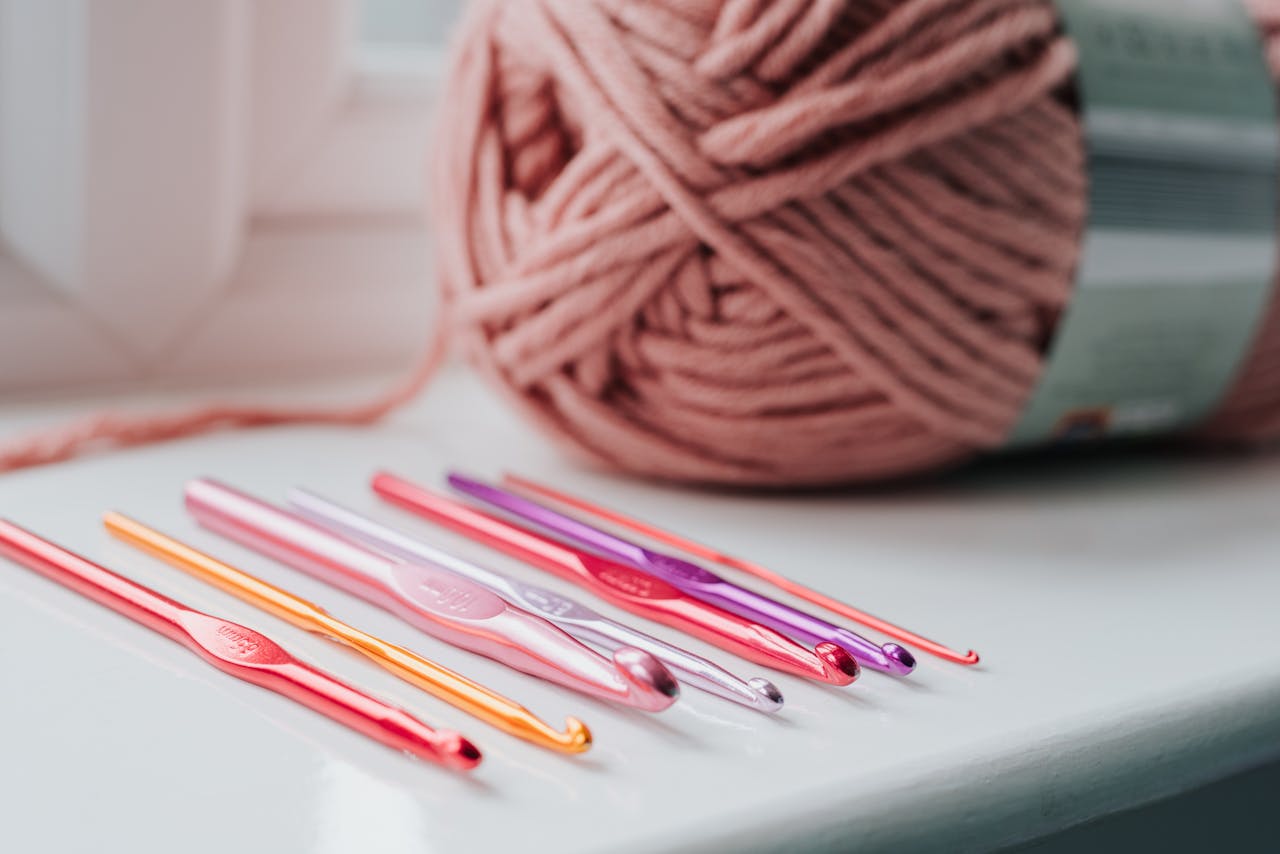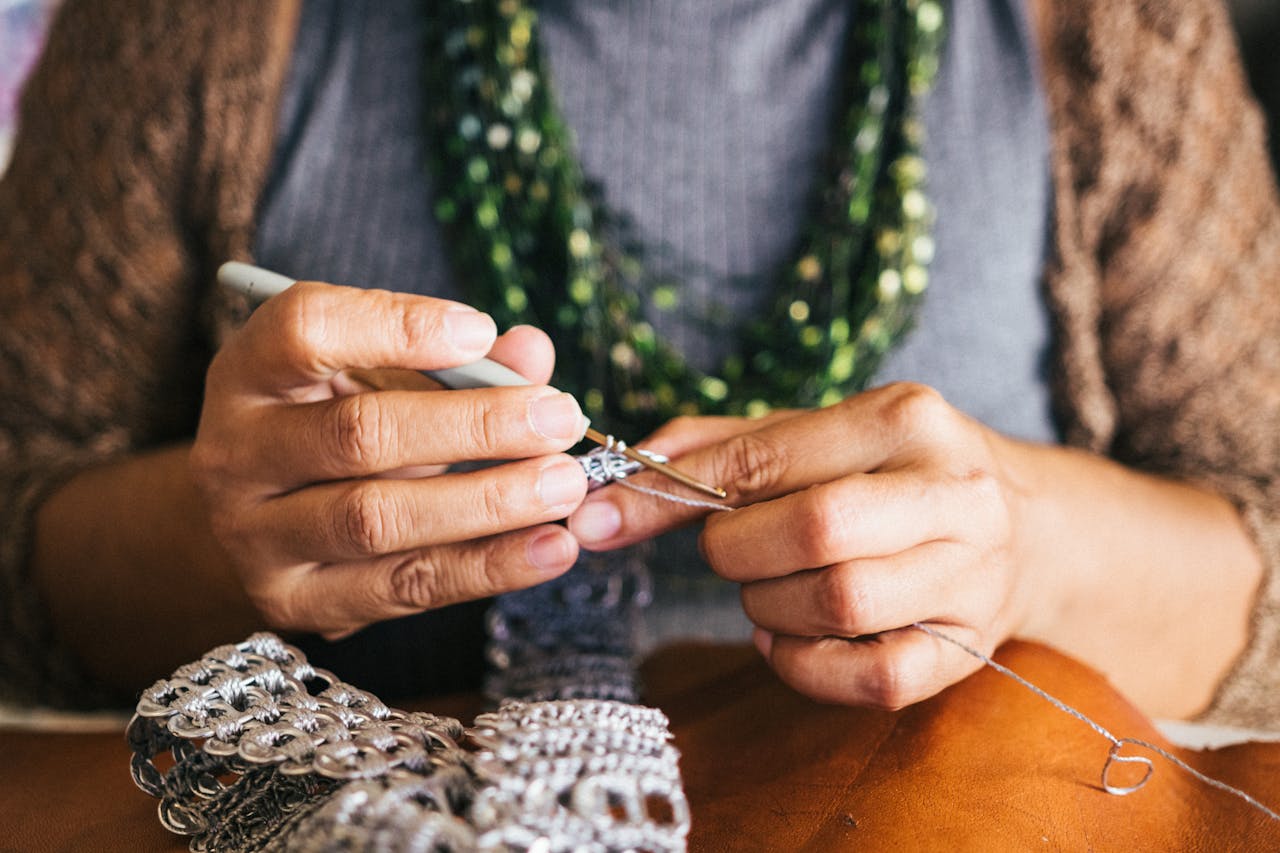- Key Takeaways
- US vs UK Terms: Knowing the Difference
- Common Crochet Abbreviations
- Reading Patterns with Confidence
- Identifying Pattern Sections
- Interpreting Instructions and Repetitions
- Visual Aids and Diagrams
- Keeping Track of Your Progress
- Dealing with Mistakes Gracefully
- Asking for Help When Needed
- Gathering Your Materials
- Step-by-Step Guide to Your First Project
- Finishing Touches and Troubleshooting
- Advanced Stitches and Techniques
- Reading Complex Patterns
- Experimenting with Textures and Shapes
- Creating a Practice Routine
- Building Confidence Through Small Projects
- Joining the Crochet Community for Support
- Frequently Asked Questions
Embarking on the journey of crochet can be a delightful adventure, filled with the creation of beautiful and intricate designs. However, for beginners, reading crochet patterns can seem like deciphering an enigmatic code. This article aims to demystify the process, providing a comprehensive guide on how to read crochet patterns for those just starting out. From understanding the common abbreviations to selecting the right pattern for your skill level, we’ll cover the essentials to set you on the path to becoming a proficient crocheter.
Key Takeaways
- Understanding the difference between US and UK crochet terms is critical to following patterns correctly.
- Familiarizing yourself with common crochet abbreviations will make reading patterns easier and more intuitive.
- Pattern structure is important; learn to identify sections and interpret instructions to progress smoothly through your project.
- Begin with beginner-friendly patterns that match your skill level and gradually challenge yourself with more complex designs.
- Practice is key; create a routine, start with small projects, and engage with the crochet community for support and inspiration.
Decoding the Crochet Code: Understanding Abbreviations
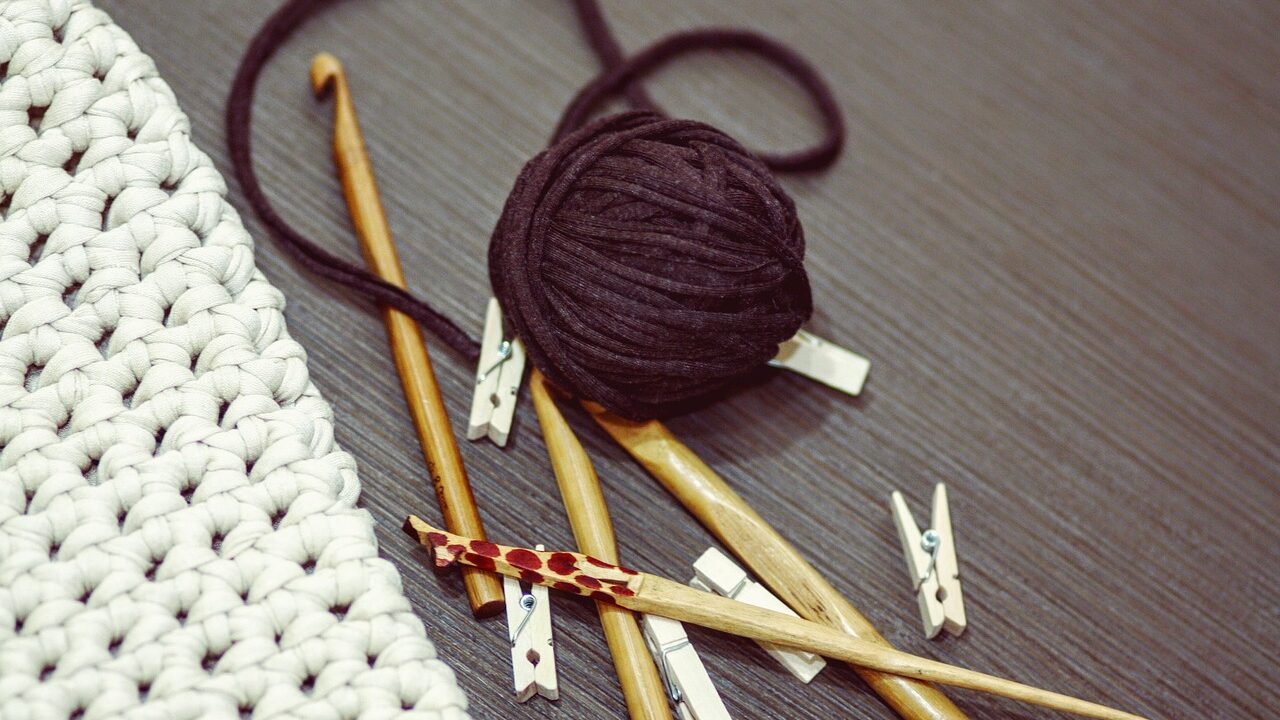

US vs UK Terms: Knowing the Difference
Crochet patterns can vary depending on the region, with the US and UK using different terms for the same stitches. It’s crucial to identify which terminology your pattern uses to avoid any confusion. Here’s a quick guide to help you out:
| US terms 🇺🇸 | US Abbreviation | UK terms 🇬🇧 | UK abbreviation |
| chain | ch | chain | ch |
| slip stitch | ss | slip stitch | ss |
| single crochet | sc | double crochet | dc |
| mhalf double crochet | hdc | half treble crochet | htr |
| mdouble crochet | dc | treble crochet | tr |
| treble crochet | tr | double treble crochet | dtr |
| double treble crochet | dtr | triple treble crochet | ttr |
Common Crochet Abbreviations
Abbreviations are the shorthand of crochet, allowing patterns to be concise and easy to follow. As you become more familiar with these, reading patterns will become second nature. Here’s a starter list of basic stitch abbreviations:
- Ch: Chain
- Sl st: Slip stitch
- Sc: Single crochet
- Hdc: Half double crochet
- Dc: Double crochet
- Tr: Triple (or treble) crochet
Reading Patterns with Confidence
Once you’ve got the hang of abbreviations, you’ll start to see patterns as a guide rather than a puzzle. Remember, parentheses and asterisks are used to group stitches or indicate repetitions, making your crocheting journey smoother. And if you’re ever in doubt, write out the instructions in long form to help solidify your understanding.
Crocheting is not just about following instructions; it’s about creating something unique with every stitch. Embrace the learning curve and soon you’ll be crafting with confidence.
The Blueprint of Crochet: Pattern Structure Explained
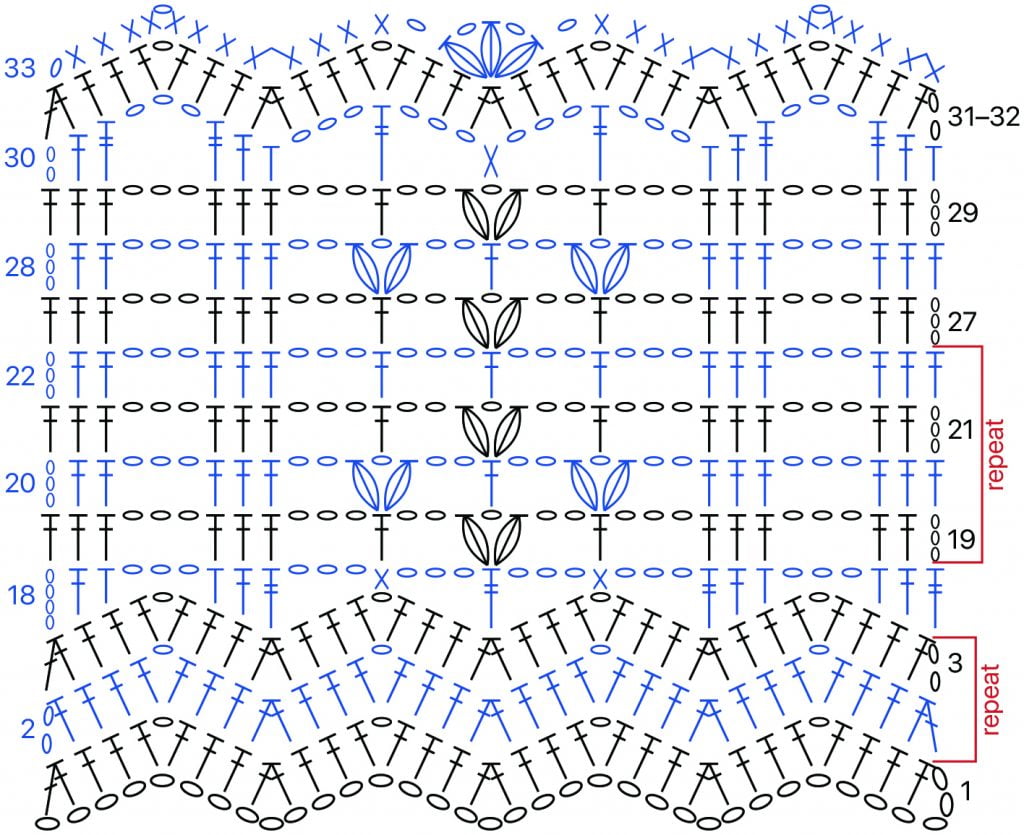

Diving into crochet patterns for beginners can be as exciting as it is daunting. But fear not! Understanding the structure of a pattern is like having a map in your hands. Let’s unfold this blueprint together.
Identifying Pattern Sections
Patterns are like recipes; they have ingredients and instructions. Look for these common sections:
- Title: Sets the stage for your project.
- Supplies: Lists yarn, hook size, and other materials.
- Abbreviations: A quick reference to decode the crochet shorthand.
- Instructions: The step-by-step guide to creating your masterpiece.
Remember, each designer might sprinkle their own style into the format, but these elements are your bread and butter.
Interpreting Instructions and Repetitions
Patterns speak in a language of loops and stitches. To follow along:
- Start with the abbreviations section to get familiar with the terms.
- Read through the instructions carefully, noting any repeats or special stitches.
- Use stitch markers or counters to keep your place—especially handy for repetitions.
Patterns are your path to creating everything from cozy sweaters to stylish dresses, so take it one stitch at a time.
Visual Aids and Diagrams
A stitch diagram is worth a thousand words. These visual helpers can show you:
| Stitch Type | Symbol |
|---|---|
| Single Crochet (sc) | X |
| Double Crochet (dc) | T |
Embrace diagrams as a companion to written instructions, and you’ll be crafting versatile accessories with ease.
Crocheting is not just about following a pattern; it’s about expressing your unique style with handmade charm and creativity. So, as you explore crochet fashion for all seasons, remember that each stitch is a reflection of your personal touch.
Navigating the Stitch Seas: Tips for Pattern Reading


Embarking on the crochet journey can be as thrilling as sailing uncharted waters. To ensure a smooth voyage, here are some navigational aids to help you read crochet patterns with ease.
Keeping Track of Your Progress
Marking your spot in a crochet pattern is crucial, just like using a bookmark in a novel. Here’s a simple system to keep you on course:
- NOTES: Jot down any modifications or reminders.
- MARKING: Tick off rows or rounds as you complete them.
- ROUNDS: Use stitch markers to denote the end of each round.
Remember, consistency is key to maintaining your course.
Dealing with Mistakes Gracefully
Mistakes are the knots in the yarn of learning. When you hit a snag:
- Stay calm and assess the error.
- Gently unravel your work to the point before the mistake.
- Re-crochet the section, paying close attention to the pattern.
Embrace each mistake as a stepping stone to mastery.
Asking for Help When Needed
No sailor learns in isolation. If you’re adrift with a pattern, seek guidance:
- Reach out to more experienced crocheters.
- Join online forums or local crochet groups.
- Utilize video tutorials for visual aid.
Crochet fosters community, sustainability, relaxation, creativity, and accomplishment. Join the crochet community for support and eco-friendly crafting. Start your crochet journey today!
From Yarn to Garment: Following a Pattern from Start to Finish


Transforming a skein of yarn into a beautiful garment is a rewarding journey. It’s like following a map to a treasure, with each stitch marking the path to your finished masterpiece. Let’s unravel the process step by step.
Gathering Your Materials
Before you set sail on your crochet adventure, make sure you have all the necessary tools and materials. Check the pattern for the yarn weight and hook size to ensure your garment turns out just right. Don’t forget other essentials like scissors, a tapestry needle, and stitch markers.
- Yarn: Match the weight (thickness) specified in the pattern.
- Hook: Use the size that corresponds with your yarn.
- Accessories: Scissors, tapestry needle, stitch markers, and tension rings for consistent tension.
Remember, using the right materials is crucial for the success of your project.
Step-by-Step Guide to Your First Project
Embarking on your first project can feel like navigating uncharted waters. Start with a slip knot and follow the pattern’s structure, which often includes sections like the back, front, and sleeves. Pay attention to whether your pattern is worked in rows or rounds, and tackle one section at a time.
- Make a slip knot on your hook.
- Follow the pattern’s instructions for each section.
- Work in rows or rounds as specified.
- Use headings like ‘Front’ or ‘Back’ to guide you.
Finishing Touches and Troubleshooting
As you approach the end of your crochet quest, it’s time to add those finishing touches. Weave in ends, block your garment for a professional look, and address any mistakes. If your garment isn’t the right size, check if you’ve skipped any crucial information like gauge or yarn requirements.
- Weave in ends securely.
- Block your garment to shape it.
- Review the pattern if there are size issues.
Remember, practice makes perfect, and every stitch is a step towards becoming a crochet wizard!
Beyond the Basics: Expanding Your Crochet Vocabulary


Once you’ve got the hang of the basics, it’s time to broaden your horizons and add some new stitches and techniques to your repertoire. Dive into the world of advanced stitches and discover how they can transform your projects from simple to spectacular. Here’s a quick rundown of some advanced stitches you might encounter:
- Front Post Double Crochet (FPDC)
- Back Post Double Crochet (BPDC)
- Popcorn Stitch
- Cable Stitch
Advanced Stitches and Techniques
Mastering advanced stitches often involves understanding complex combinations and sequences. It’s like learning a new language within crochet! Practice these stitches with small swatches before incorporating them into larger projects.
Reading Complex Patterns
Complex patterns can be intimidating, but they’re just a series of steps to follow. Break them down into smaller, manageable sections, and you’ll find they’re not so scary after all. Use stitch markers to keep your place and refer to pattern notes for clarification.
Experimenting with Textures and Shapes
Playing with textures and shapes can really bring your crochet to life. Try combining different stitch patterns to create unique effects, or experiment with shaping techniques to craft items that fit perfectly.
Remember, every expert was once a beginner. Take it one stitch at a time, and you’ll be amazed at how far you can go.
When choosing yarn for your advanced projects, consider the properties you need. Here’s a guide to choosing the best yarn for crocheting: Acrylic for beginners, Cotton for warm weather, Wool for warmth, and Bamboo for unique textures. Start your crochet journey today!
Stitching It All Together: Practice Makes Perfect


Creating a Practice Routine
Establishing a consistent practice routine is key to mastering crochet. Set aside a specific time each day or week dedicated to crocheting. This will help you develop muscle memory and increase your stitching speed over time. Remember, crochet is a craft for all ages, offering relaxation, brain stimulation, and community.
Building Confidence Through Small Projects
Start with small projects to build your confidence. Here’s a list of beginner-friendly projects to consider:
- Coasters
- Scarves
- Simple hats
- Granny squares
These projects are quick to complete, giving you a sense of accomplishment and encouraging you to take on more complex patterns.
Joining the Crochet Community for Support
The crochet community is incredibly supportive. Join online forums, local craft groups, or social media platforms to connect with fellow crocheters. Sharing your progress, asking for advice, and celebrating each other’s work can be incredibly motivating. It’s never too late to start and enjoy the benefits of crocheting.
Remember to count your stitches frequently and ask for help if you need it. Identifying issues early on will save you time and frustration.
Wrapping It Up!
Alrighty, yarn enthusiasts! We’ve unraveled the mysteries of crochet pattern lingo together, and now you’re equipped with the know-how to tackle those cozy blankets, cute amigurumi, and stylish beanies. Remember, every pro was once a beginner, fumbling through their first ‘sc’ and ‘dc’. So, grab your hook, choose a ‘beginner friendly’ pattern, and give it a whirl. Mistakes? They’re just part of the journey. Keep practicing, and soon you’ll be reading patterns like a seasoned stitcher. Happy crocheting!
Frequently Asked Questions
US and UK crochet terms refer to the same stitches but with different names. For example, a single crochet (sc) in the US is called a double crochet (dc) in the UK. It’s important to identify the origin of your pattern to use the correct terms.
Start by familiarizing yourself with common abbreviations and symbols used in the pattern. Then, read through the pattern to understand its structure before beginning your project. Look for patterns labeled ‘beginner’ or ‘easy’ if you’re just starting out.
If you make a mistake, don’t panic. Carefully unravel your work to the point before the error and redo the stitches correctly. Keep track of your progress to make it easier to spot and fix mistakes.
Use stitch markers, counters, or make notes to keep track of your progress. This can help you remember where you are in the pattern, especially if you need to pause your work.
Yes, it’s completely normal. Crochet patterns can seem like a different language at first. Take your time, practice with simple patterns, and don’t hesitate to ask for help from the crochet community or more experienced crafters.
